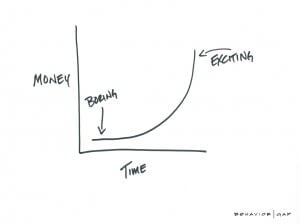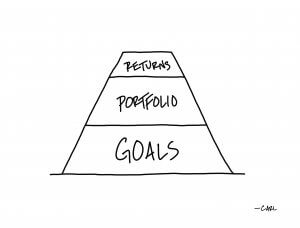
Indexed Annuities
Investment ManagementBy: Jude McDonough, CFP® AIF®
Feb 19, 2020
Indexed Annuities are the evil twin of Variable Annuities. They have a lot of similarities, but there are some key differences. The most significant difference is that most Indexed Annuities will guarantee that you will not have a loss of principal. Most Variable Annuities don’t have that guarantee. Another major difference is in the underlying investments. An Indexed Annuity usually offers you a guarantee against downside in return for a limit on your upside. The upside is tied to an index. The most commonly used index is the S&P 500, which is the US Stock Market. An Indexed Annuity may offer you a maximum of 6% upside in any given year. That means that if the S&P 500 is up 30% as it was in 2019, you get 6%. However, if the S&P is down as it was in 2018, you get 0% instead of the loss of the S&P 500.
One thing to look out for is the fee on these products. The fee is usually 1% or maybe 1.25%, which is generally lower than a Variable Annuity. However, if the guarantees quoted are gross of the fee, then your maximum downside in any year is the fee and your maximum upside is the stated amount less the fee. In continuing with the example, in 2019, you would have received a return of 6% less your fee to net you a 4.75% return if your fee is 1.25%. In 2018, your return would have been 0% less the fee, netting you -1.25%.
Similar to Variable Annuities, Indexed Annuities are very mis-sold. They pay high commissions to the advisor and you really need to understand how it fits into your financial picture vs. how it fits into the income of the person selling it to you. A lot of them will offer a bonus upfront to entice you to buy it. The bonuses can be as high as 10% return on your money. That all sounds great, but there has to be a catch. In this case, there is more than one catch. The first major catch is that your money is usually tied up for periods in excess of 10 years with incredibly high charges if you need to access the money within the time period. I’ve seen them as high as 16 years. You are allowed to take a stated percentage each year (usually 10%); however, I still feel uncomfortable tying someone’s money up for that long of a period of time.
The second catch is in the returns after the initial 10% bonus. Like the Variable Annuity, the Indexed Annuity usually has an Income or Death Benefit Rider associated with it. The rates on those are often higher than Variable Annuities and can be as high as 6 or 7%. Many investors think they are getting that as return on their principal. Unfortunately, that is not the case. Please refer to our Variable Annuities post for further details on how that works. The reality is that the caps are usually low, and the fees are usually high, which leads you to minimal returns for the rest of the contract. If you get 10% upfront and then average 2% per year for the next 16 years, is that an acceptable outcome for you?
In conclusion, Indexed Annuities are very complex just like Variable Annuities. There are a lot of strings attached and you need to really understand the details. As stated in the Variable Annuity post, they may be appropriate for a portion of your money, but never for all of your money. If you couldn’t tell, I’m not a very big fan of Indexed Annuities. Proceed with caution and remember, if it sounds too good to be true, it probably is.


